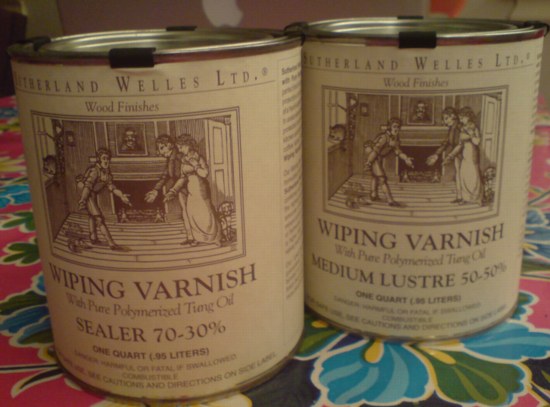
For the 2002 reissue of his 1974 catalogue, PROPOSTA PER UN'AUTOPROGETTAZIONE , Enzo Mari added "a few technical hints." I love them, especially the quotation marks, even as I prepare to ignore them a little and end up with something less "belle" than it could be:
...Then, from a purely formal (symbolic) and "instructive" point of view, table tops are "attractive" ["belle"] if they are made by putting several small planks together. From a strictly utilitarian point of view you can use plywood or chipboard.I found this slightly obsessive discussion of finishing solid pine furniture to be quite helpful, if a little daunting. But already, it saved me from myself and helped me lift my wood finishing sights beyond the lying corporate shelves of Ace Hardware:For the same reasons the constructions are "attractive" if they are left rough, with the saw marks, neither planed nor varnished.
First, however, a warning is needed: there is zero 'truth in advertising' in the finish industry. Absolutely anything can contain absolutely anything, no matter what the label says. There are products out there labelled tung oil that don't have any tung oil whatsoever in them. Many 'tung oil' products depend mostly on phenolic resins. You have to buy from a source that is expert enough to know precisely what is in their products and trustworthy enough to tell you. In Canada, that's Lee Valley, in the USA, Sutherland Welles.Sounds good to me.
Sure enough, the extremely helpful folks at Sutherland and Welles guided me toward the right product for the project, a table with a top that will see regular use. I expect I'll have enough polymerized tung oil varnish and sealer to give the table a good five coats, if not the 10-12 that Sankey prefers.
Meanwhile, I mapped out each piece to be cut onto the Ivar shelf components with blue tape. I plan to cut everything to length, finish the parts while I can reach all the corners, and then assemble the table. And then give it a last coat or two for good measure.
The wood cost $120, the tung oil, $82.












